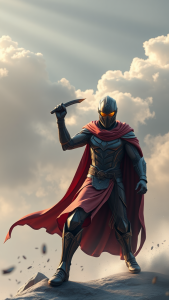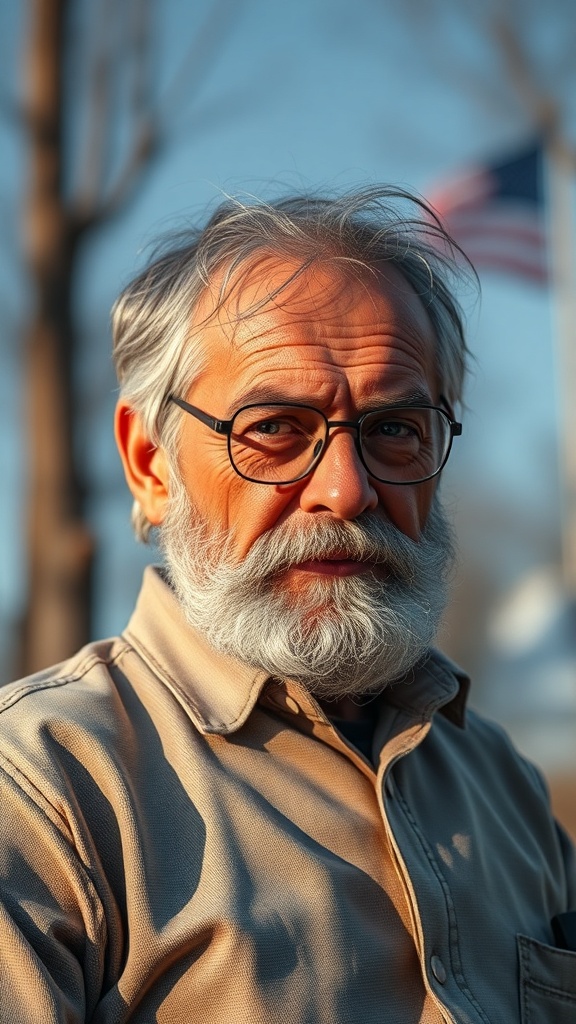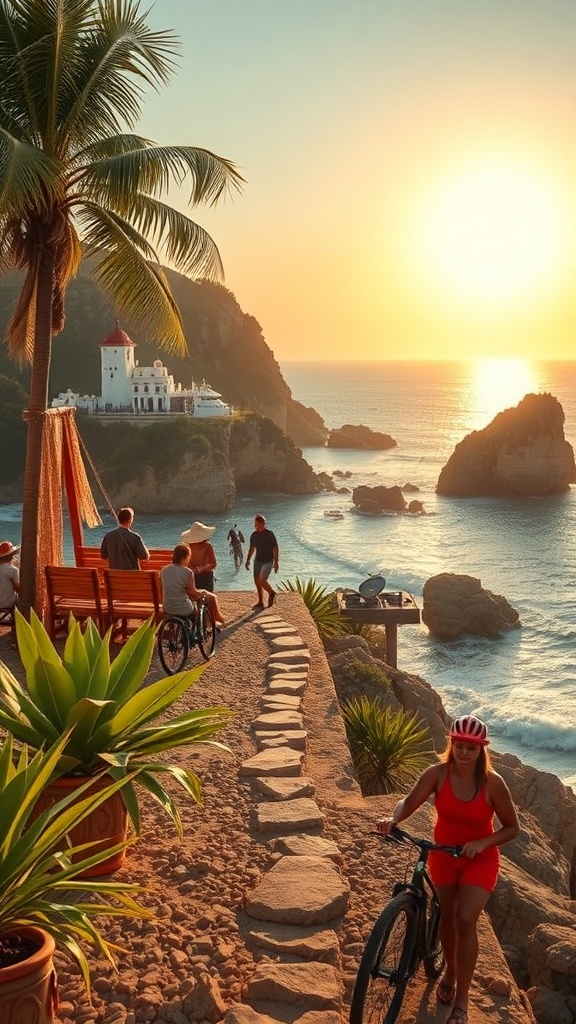The Role of Hero Images in Web Design: Grabbing User Attention
In the world of web design, hero images play a pivotal role in capturing the user’s attention. These large, striking images sit prominently at the top of a webpage, often acting as the first visual element visitors see. By harnessing the power of emotion and storytelling, hero images create a compelling introduction to your content. In a way, they serve as visual ambassadors for your brand, setting the tone and context for the site experience.
Implementing a hero image effectively can make a significant difference in user engagement and conversion rates. Here are some essential points to consider when utilizing hero images in your design strategy:
- Choose Relevant Imagery: Your hero image should resonate with your target audience, reflecting their interests or needs. For instance, if your site is about travel, a breathtaking landscape photo will attract and engage travel enthusiasts. Always ask yourself, “Does this image represent my brand’s message?”
- Prioritize Quality: High-resolution images are crucial. Blurry or pixelated visuals can harm your credibility and detract from user experience. Ensure that images are optimized for fast loading while maintaining visual clarity.
- Incorporate Text Wisely: If you include a headline or call to action over the hero image, ensure the text is legible. Choose contrasting colors to make sure the text stands out. A simple, concise message works best, such as a value proposition or a motivational phrase.
- Consider the Composition: The layout of your hero image affects user experience. You may want to leave space for text or buttons, so ensure the focal point of the image is not obstructed.
- Make It Responsive: Users access websites through various devices, from desktops to smartphones. A hero image must adapt seamlessly to different screen sizes, maintaining impact and clarity regardless of the device.
Beyond aesthetics, hero images serve a strategic function for website navigation. They can effectively guide users’ eyes toward important areas of your website. When placed correctly, they create a visual hierarchy that tells visitors where to focus their attention. For example, a well-placed button on the hero image may lead users to the most crucial pages, such as a product catalog or sign-up form. This guidance enhances usability, helping users find what they need quickly.
Get The 30-Minute InfopreneurHow to Create & Market Digital Products with ChatGPT
The emotional impact of a hero image cannot be understated. Human beings naturally connect with visual storytelling. An evocative hero image can evoke feelings that resonate with visitors and lead them to engage further with your content. For instance, a heartwarming photograph of your team working together may build trust and foster a sense of community. Users are more likely to explore services that make them feel understood and connected.
To fully leverage the potential of hero images, conduct A/B testing to determine which visuals perform better. Experiment with different styles, colors, and messages to see what resonates most with your audience. Use analytics to monitor how users interact with your website after introducing new hero images. This data will offer insights that can help refine your design approach even further.
Get The 30-Minute InfopreneurHow to Create & Market Digital Products with ChatGPT
Don’t forget about accessibility. Make sure that any text overlaid on your hero image is easy to read for all users, including those with visual impairments. Adding descriptive alt text to your images is also essential for improving your website’s accessibility while boosting SEO.
Hero images are vital in web design for grabbing user attention. When done right, they can elevate the overall user experience, making your website more engaging and effective. By thoughtfully selecting imagery, ensuring high quality, optimizing for devices, and testing various design elements, you can create a powerful first impression that encourages visitors to explore further.
Best Practices for Choosing the Right Hero Image
Choosing the right hero image for your website is crucial in creating an immediate impact on visitors. A compelling hero image serves as the focal point that captures attention, sets the tone, and communicates your brand’s message. Here are some best practices to help you select the perfect hero image.
Get The 30-Minute InfopreneurHow to Create & Market Digital Products with ChatGPT
Understand Your Brand
Your hero image should reflect your brand identity. Take the time to understand what your brand stands for, including its values, mission, and target audience. Your image should resonate with your audience and evoke the emotions or actions you want to inspire.
Choose High-Quality Images
Quality matters when it comes to visuals. A blurry or pixelated hero image can tarnish your website’s credibility. Here are some key points to keep in mind:
Get The 30-Minute InfopreneurHow to Create & Market Digital Products with ChatGPT
- Opt for high-resolution images that load well across devices.
- Use professional photography or high-quality stock images that are relevant to your message.
- Avoid generic images that don’t add any value or connection to your content.
Consider Image Composition
The composition of the image plays a significant role. A well-composed image draws the eye and helps guide visitors to important content. Here’s how to ensure great composition:
- Use the rule of thirds to create balance and interest.
- Ensure there are clear focal points that align with your content’s message.
- Leave space for text if you plan to overlay headlines or calls to action.
Think About Color and Contrast
Colors evoke emotions and influence perceptions. Your hero image should complement your website’s color scheme. Here’s what to consider:
Get The 30-Minute InfopreneurHow to Create & Market Digital Products with ChatGPT
- Choose colors that align with your brand identity.
- Ensure sufficient contrast between the image and any text overlay for easy readability.
- Think about how colors can enhance the mood you want to convey—warm colors can energize, while cool colors can calm.
Make it Relevant to Your Audience
The hero image should directly relate to who your audience is and what they’re looking for. Carry out research to understand their preferences. Here’s how to gauge relevance:
- Survey your audience or use analytics to see which visuals resonate most.
- Test multiple hero images to find the best fit through A/B testing.
- Consider cultural implications if your audience is diverse; what communicates effectively in one culture may not in another.
Be Mindful of Loading Times
Heavy images can slow down your website, leading to higher bounce rates. A key aspect of web design is ensuring your site runs smoothly. Here are tips to optimize your hero image:
Get The 30-Minute InfopreneurHow to Create & Market Digital Products with ChatGPT
- Compress images without sacrificing quality using tools like TinyPNG or Adobe Photoshop.
- Consider using modern formats like WebP, which provide better quality at smaller file sizes.
- Implement responsive images that adjust based on the user’s device.
Use Text Wisely
If you plan to include text on top of your hero image, make sure it is not overshadowed by the visual. Your message should be clear and concise. Follow these tips:
- Keep text short—focus on a strong headline and a brief subheader.
- Use contrasting font colors to ensure excellent readability.
- Select a font style that is consistent with your brand’s voice.
Test and Iterate
Once you’ve chosen a hero image, don’t just set it and forget it. Monitor its performance and gather feedback. Here’s how to effectively test your hero image:
Get The 30-Minute InfopreneurHow to Create & Market Digital Products with ChatGPT
- Use tools like Google Analytics to measure engagement metrics.
- Gather visitor feedback through surveys or user testing.
- Be willing to change and adapt based on what resonates with your audience.
Choosing the right hero image is not just about aesthetics; it’s about making a statement. By understanding your audience, focusing on quality and relevance, and testing your choices, you can create an inviting web presence that effectively engages visitors from the moment they arrive. Keep these best practices in mind as you curate the visuals that represent your brand.
The Impact of Hero Images on Website Conversion Rates
In web design, a hero image can serve as the focal point of a page, presenting a striking visual that captures the attention of visitors. By prominently displaying powerful images at the top of a website, businesses aim to evoke emotions, convey messages, and often drive conversion rates. Understanding the impact of hero images on website performance can empower you to make informed design choices that resonate with your audience.
One key reason hero images are effective is their ability to create an emotional connection with visitors. When users land on a webpage, they quickly form opinions based on visual stimuli. A stunning hero image can evoke feelings of inspiration, excitement, or trust. It can also help establish your brand’s identity and values. When selecting a hero image, consider the emotions you want to elicit from your target audience. Are you looking to inspire adventure, luxury, or innovation? The right image can set the tone for a user’s overall experience on your site.
Get The 30-Minute InfopreneurHow to Create & Market Digital Products with ChatGPT
The choice of imagery matters greatly. Hero images that are high-quality, relevant, and well-composed contribute more significantly to site engagement. Users are more likely to stay prominent on a website that uses a visually appealing hero image compared to one with generic or low-quality visuals. Investing in professional photography or high-resolution images can elevate the look of your site drastically, enhancing your brand’s credibility and attracting potential customers.
Visual hierarchy is another aspect where hero images play a crucial role. A well-designed hero section typically combines bold text and call-to-action (CTA) buttons strategically laid over the image. This layout guides visitors’ eyes, prompting them to take the desired actions right away. Effective CTAs should be concise, compelling, and visually distinct. Common examples include “Shop Now,” “Learn More,” or “Sign Up Today.” By placing these buttons over an eye-catching image, you increase the likelihood that users will click through.
Get The 30-Minute InfopreneurHow to Create & Market Digital Products with ChatGPT
Additionally, hero images support storytelling. They provide a canvas for narrating your brand’s story or the purpose behind your product or service. This approach often helps visitors relate to your offering on a personal level, as they can visualize themselves benefiting from what you’re offering. Think about how your hero image, combined with text, can tell a story that resonates with your audience. If you sell outdoor gear, for example, consider using a picture of a family hiking in nature, invoking a sense of adventure and exploration.
Moreover, the impact of hero images can also be measured through analytics tools. Understanding user behavior on your website can show you how effective your hero image is in converting visitors. Metrics to keep an eye on include:
Get The 30-Minute InfopreneurHow to Create & Market Digital Products with ChatGPT
- Bounce rate: A high bounce rate may indicate that your hero image isn’t engaging enough.
- Click-through rate (CTR): Analyze how often visitors click on your CTA buttons when they are prominently displayed on the hero image.
- Time on page: If users stay longer, it could signify that your hero image successfully captures their interest.
While hero images can significantly enhance your website’s appeal, it’s crucial to ensure they don’t slow down page loading speeds. High-resolution images can sometimes lead to longer loading times, which could potentially harm user experience and SEO rankings. To overcome this challenge, consider optimizing images by compressing files while maintaining quality. Tools like TinyPNG or ImageOptim can assist in achieving the best balance between quality and performance.
It’s also essential to consider responsiveness. Your hero images should adapt well to different screen sizes. With the growing use of mobile devices for internet browsing, ensuring your hero image looks great on smartphones and tablets is vital. Utilizing responsive design techniques will help keep your images proportionate and visually appealing across various platforms.
Get The 30-Minute InfopreneurHow to Create & Market Digital Products with ChatGPT
Hero images into your website design is more than just an aesthetic choice—it can directly influence your conversion rates. By creating a strong emotional connection, enhancing visual hierarchy, and telling a compelling story, you can effectively engage visitors. With proper analytics and optimization, the right hero image can genuinely transform how you connect with your audience and drive conversions on your website.
Balancing Aesthetics and Performance: Hero Images in Web Design
In the world of web design, hero images hold a significant place. They are large, eye-catching visuals that typically sit at the top of a webpage. When optimized correctly, hero images can enhance the aesthetic appeal of a website while still ensuring strong performance. Balancing these two aspects is crucial for providing a seamless user experience.
One of the main advantages of using a hero image is its ability to make an instant connection with visitors. A well-chosen image speaks to the feelings, interests, and motivations of users. This is essential because first impressions matter in web design. An engaging hero image can grab attention and entice visitors to explore a site further, increasing overall engagement rates.
Get The 30-Minute InfopreneurHow to Create & Market Digital Products with ChatGPT
However, choosing the right hero image is not solely about aesthetics. Performance is equally important. Images that are too large in file size can drastically slow down web page loading times, which can lead to frustration for users and increase bounce rates. To maintain a balance between aesthetics and performance, consider the following strategies:
- Optimize Your Images: Use formats like JPEG or WebP, which allow for high-quality images with significantly reduced file sizes. This step can significantly enhance loading speed.
- Implement Lazy Loading: This technique involves loading images only when they come into the viewer’s viewport. This means that users don’t have to wait for images that aren’t immediately visible, improving perceived loading times.
- Test Different Sizes and Resolutions: Sometimes, a large hero image may not be necessary. You can reduce a high-resolution image to a smaller size, which keeps the visual integrity intact while enhancing performance.
- Use CSS Techniques: Employ CSS properties for responsive images and background images that adapt to various screen sizes and resolutions.
Another key aspect of hero images in web design is text overlay. Text can provide context to the image and guide users through your message. However, it’s important to ensure the text remains readable over the image. Use contrasting colors for the font and implement shadow or semi-transparent overlays to create a clearer division between text and image. This ensures that your message shines through without compromising the visual impact of the hero image.
Get The 30-Minute InfopreneurHow to Create & Market Digital Products with ChatGPT
Utilizing a call-to-action (CTA) in combination with your hero image can further enhance its effectiveness. A clear, compelling CTA prompts users to take the next step. Whether it’s signing up for a newsletter, making a purchase, or learning more, strategic placement of the CTA can increase conversion rates. Make sure your CTA stands out, using contrasting colors and larger fonts to draw attention.
This comes with another consideration: accessibility. It’s essential to ensure that your hero image and accompanying text are accessible to all users, including those with visual impairments. Using alternative text descriptions (alt text) for images not only aids in making your site compliant with accessibility standards but also can enhance SEO. Search engines rely on this text to understand what the images are about, which can contribute positively to your search rankings.
Get The 30-Minute InfopreneurHow to Create & Market Digital Products with ChatGPT
Consider the emotional impact of your hero images. Images can evoke feelings and set the tone for the entire website. Selecting images that resonate with your target audience will help build a connection and increase user engagement. For instance, using images of real people or subjects relevant to your content can humanize your website, making it more relatable and appealing.
Finding the right hero image is a balancing act of aesthetics and performance, but when done effectively, it can elevate your web design to new heights. Therefore, prioritize how these images serve both the emotional and functional needs of your audience. In doing so, you create a visually stunning site that also loads efficiently and engages users from the moment they arrive.
Trends in Hero Image Design for 2024 and Beyond
As we dive into 2024, hero image design continues to play a pivotal role in web design. This element acts as the first impression for visitors and can either captivate or repel them. With the rapid evolution of technology and design trends, understanding what makes an effective hero image is vital for any website. Here are some trending strategies to consider this year and beyond.
Get The 30-Minute InfopreneurHow to Create & Market Digital Products with ChatGPT
Simplicity Reigns Supreme
In an age of information overload, simplicity is more appealing than ever. Users tend to appreciate clean and straightforward designs that allow them to focus on the message without distractions. Large, high-resolution images with minimal text create an immediate impact. Think about using bold typography that can be read at a glance. Keep text concise and relevant to your brand message. Remember, less is often more when it comes to hero images.
Immersive Video Backgrounds
Static images are taking a backseat to video backgrounds. This trend is gaining speed as audiovisual content can transmit emotion and storytelling more effectively. A short looping video can set the tone for your website, providing an engaging user experience. To optimize loading times, consider using compressed video formats or selecting high-quality static images as a fallback for slower connections.
Get The 30-Minute InfopreneurHow to Create & Market Digital Products with ChatGPT
Personalization and Customization
Websites that offer a personalized experience see higher engagement rates. Hero images can also be tailored to individual users based on their behavior, location, or preferences. Implement dynamic elements that change according to user interactions. For example, an e-commerce site might showcase different hero images highlighting seasonal promotions or trending products related to previous visits.
Dynamic and Interactive Elements
Static visuals are becoming passé. interactive elements in hero images can foster user engagement and exploration. This might include hover effects, where images change on mouse-over, or clickable areas that lead to more in-depth information. These features encourage visitors to interact with the content, making the browsing experience much more enjoyable.
Get The 30-Minute InfopreneurHow to Create & Market Digital Products with ChatGPT
Bold Colors and High Contrast
Color trends play a significant role in hero image design. In 2024, vivid colors and high contrast schemes are expected to dominate. Using bold color palettes can create a striking visual impact and evoke specific emotions. When you choose your color scheme, consider your target audience and the feelings you want to convey. Warm colors tend to invite action, while cooler shades can create a sense of calm.
Mobile-First Design
With an ever-growing number of users accessing websites through mobile devices, optimizing hero images for smaller screens is essential. Responsive design ensures that images look great on any device. This might mean cropping or adjusting your hero images so they fit well across different screen sizes without sacrificing quality.
Get The 30-Minute InfopreneurHow to Create & Market Digital Products with ChatGPT
Inclusivity and Diversity in Imagery
Today’s audience values representation. Hero images that showcase diverse individuals or scenarios resonate better with a broader audience. Carefully select images that reflect various cultures, genders, and backgrounds. This can help create a sense of belonging and acceptance, making users feel connected to your brand.
Emphasis on the User Journey
Your hero image should not only capture attention but also guide users through their journey on your website. It should align with the overall goals of the site and lead users toward desired actions, such as signing up for a newsletter or exploring products. An effective hero image acts as a roadmap that visibly communicates what users can expect to find.
Get The 30-Minute InfopreneurHow to Create & Market Digital Products with ChatGPT
- Use large, high-quality images.
- Incorporate dynamic and interactive elements.
- Ensure mobile optimization.
- Opt for personalization and custom content.
- Implement bold colors for visual impact.
As hero images continue to evolve, embracing these trends will help keep your web design fresh and engaging. By focusing on a user-centered approach and integrating modern techniques, your hero image can significantly enhance user experience, leading to better engagement and conversion rates. With these insights, you can confidently step into 2024 and beyond, ensuring your website remains ahead of the curve.
Conclusion
To sum up, hero images play a crucial role in web design by capturing user attention and setting the tone for the entire website. By choosing the right hero image, you can effectively communicate your brand message and engage visitors right from their first glance. It’s essential to follow best practices, such as ensuring high resolution, relevance to the content, and proper alignment with your audience’s expectations.
Moreover, the right hero image can significantly impact website conversion rates. Users are more likely to stay on a site that visually appeals to them, leading to increased engagement and higher chances of converting visitors into customers. This underscores the importance of balancing aesthetics with performance to create an inviting and effective user experience.
Get The 30-Minute InfopreneurHow to Create & Market Digital Products with ChatGPT
As we look to the future, emerging trends in hero image design for 2024 and beyond will shape how websites are perceived and interacted with. Expect to see more dynamic visuals, integration of videos, and personalized imagery that resonate with users on a deeper level.
By keeping these elements in mind, you can take full advantage of hero images to elevate your web design strategy. Infusing creativity while staying user-focused will ensure your website not only stands out visually but also performs effectively to meet your goals. Remember, in the world of web design, the first impression truly matters, and a compelling hero image can make all the difference.




